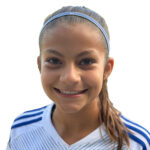Concussions: Seeing double-standard
Editor’s note: This is the latest blog post from Dr. Wendy Lebolt, a longtime coach and physiologist who is the founder of Fit2Finish, a Northern Virginia-based training, fitness and rehabilitation company which works with teams and individual players to maximize health and performance. The Soccer Wire is excited to present Wendy’s learned perspectives on the mental, physical and psychological aspects of the beautiful game. Learn more about her background here.
While the NFL’s multi-million-dollar settlement with former players regarding concussion issues is front-page news, you may not have hard about Briana Scurry, famed goal keeper of the victorious U.S. Women’s World Cup team in 1999, who fights a daily battle against darkness and depression.
Scurry sustained a concussion on April 25, 2010 while playing in goal for Washington in a Women’s Professional league game in Philadelphia. She blacked out, came to still holding the ball, then played on until halftime after which she was not allowed to return.
She sat on the bench “waiting for the clouds to go away.” They didn’t, as Christine Brennan writes in USA Today:
“She sits alone in her dark apartment for hours on end. She can’t get through a day without napping. When she drives to the grocery store, she writes down exactly where she parked her car. When she gets inside the store, she often can’t remember why she’s there.”
Soccer ended there for Scurry, but three years later she still suffers in silence wondering whether this is the way life will always look. Not front page news.
Our brains are complicated. How we respond to injuring them — just like how we use them to solve daily dilemmas — seems to vary a bit by gender. That’s a no-brainer, right, guys?

We don’t often think in a straight line, considering things from multiple angles before deciding. Guys tackle things full-steam ahead and ask questions later. I’m not a neurologist by profession, but this conclusion generally gets head-nods around a bi-gender table.
It seems this difference is literally part of how we’re made, which makes it part of how we work. So, when it comes to concussion (aka brain injury) it comes as no surprise that boys and girls experience and report, even concussions of similar severity, differently. (For more details: An interview with pediatric neurologists at Stanford University school of medicine, Fisher and Grant, reported here.)
Coaches, take note: One size doesn’t fit all for concussion symptoms. Boys more often report confusion, bad headaches and forgetting. Girls are more likely to experience drowsiness, malaise or noise sensitivity. And sometimes the symptoms are masked in the wake of game adrenaline and don’t surface until later.
So can we please all agree to abide by this rule: If there is ANY suspicion of concussion, sit them! Even if the concussion diagnosis isn’t confirmed later, a collision or impact that slows them makes it more likely they will sustain one.
We want to avoid long-term consequences, whether NFL, NCAA or Briana Scurry. As coaches, we need to know concussion symptoms and be looking for them in a physical game like ours. I’d recommend:
- Get baseline screening for athletes, 11 and up. This won’t prevent concussions but it will help in the return to play decision. I have seen balance and memory testing touted for kids as young as five years old. Younger than 10 or 11, I’m not sure how you distinguish between injury and age-appropriate developmental changes.
- Get a smartphone app (I have PAR Concussion App for iPhone) and identify a parent willing to become familiar with it and employ the tests and data base on the app.
- Coach finesse and not force. Keep the game beautiful.
- Strengthen, and not just their legs. Core and upper-body strength pays dividends in physical challenges.
- Teach proper heading technique.
- Train players’ dynamic vision. Make them “field-savvy” and not just ball watchers. It’s the knock you don’t see coming that’s the most dangerous. (Teams are using peripheral vision training, which looks promising.)
- Monitor their “hit count.” Sub-concussive impacts may add up to a full-blown concussion. Establish a relationship of trust and support with your players, so they’ll let you know if things are fuzzy or their head hurts.
If they don’t have resolution of their symptoms in the typical 10 days to three weeks, help them persevere. Sometimes there is a structural change, and not just to the micro-network of deep brain fibers, that can be addressed. Finding that is difficult and repairing it, even more so. This is brain surgery!
But thank goodness for doctors who refuse to doom young athletes to a lifetime of headaches and dizziness. Great athletes don’t give up. Briana Scurry is digging her way out of the darkness. On October 17, doctors will attempt to repair damage to her optic nerve.
She has refused to settle for “Life is just gonna be like this,” and is finding her way into the light.
Briana, we wish you well on October 17. I can still see that World Cup save as clearly as if it was yesterday. That’s what has helped millions of girls see soccer. Let’s settle this. Like women.
For more on concussions, see these articles at F2F.
http://fit2finish.com/concussions-in-youth-sports-part-ii-what-parents-coaches-and-players-can-do/
http://fit2finish.com/the-art-and-science-of-sport-concussion/
SOCCERWIRE MARKETPLACE
- The St. James FC Virginia 2024-2025 Travel Tryouts
- TSJFCV - Hiring Travel Soccer Coaches
- Hiring: U13-U19 Boys Director
- Coaches Needed
- Train with professional AC Milan coach
- Loudoun Soccer 2024/25 Travel Player Placement Sessions
- Official Elite Summer Soccer Camps with Elite Pro Clubs in Europe
- Official EPL Tickets: ARSENAL, LIVERPOOL, TOTTENHAM & MORE
- Travel to Denmark for Dana Cup Hjørring 2024
- New England Surf Challenge and Showcase 2024











